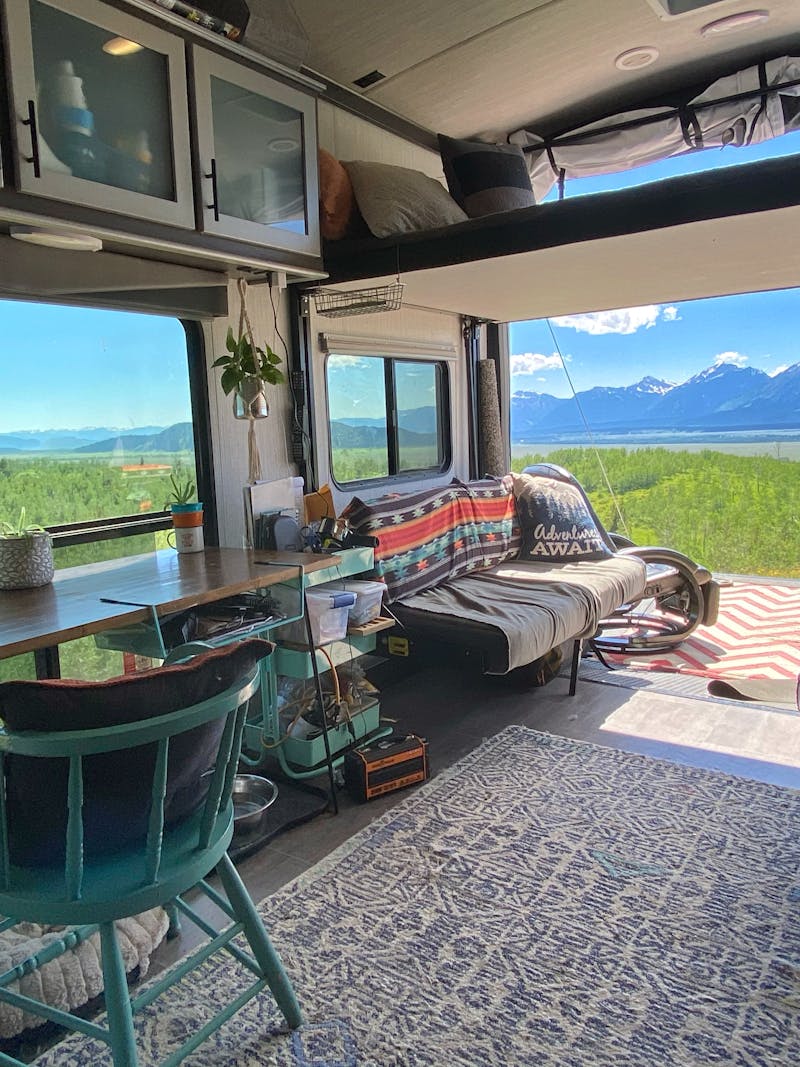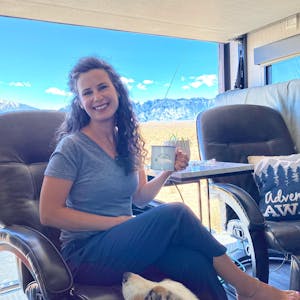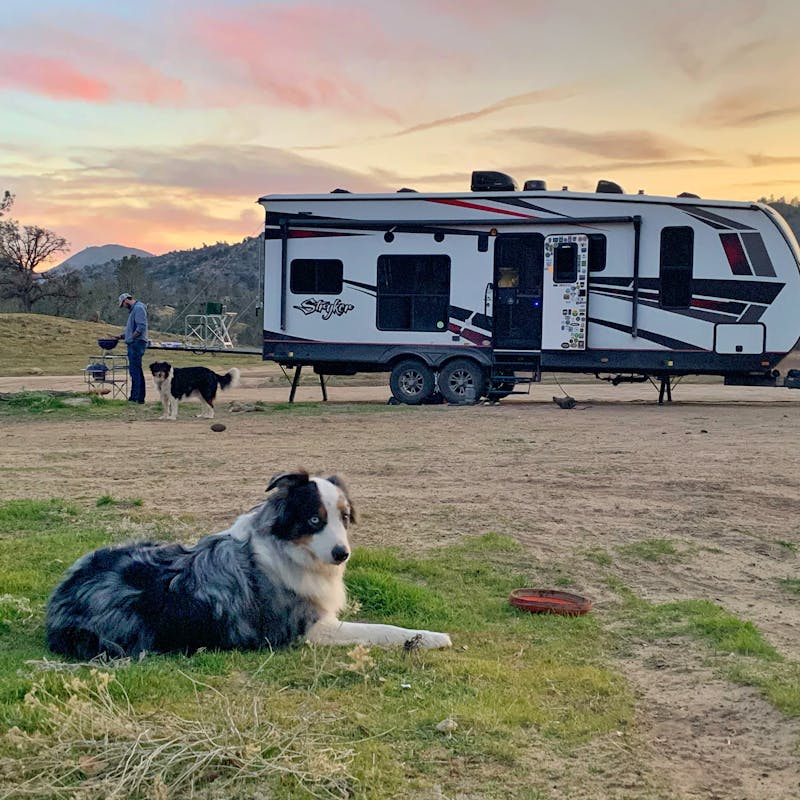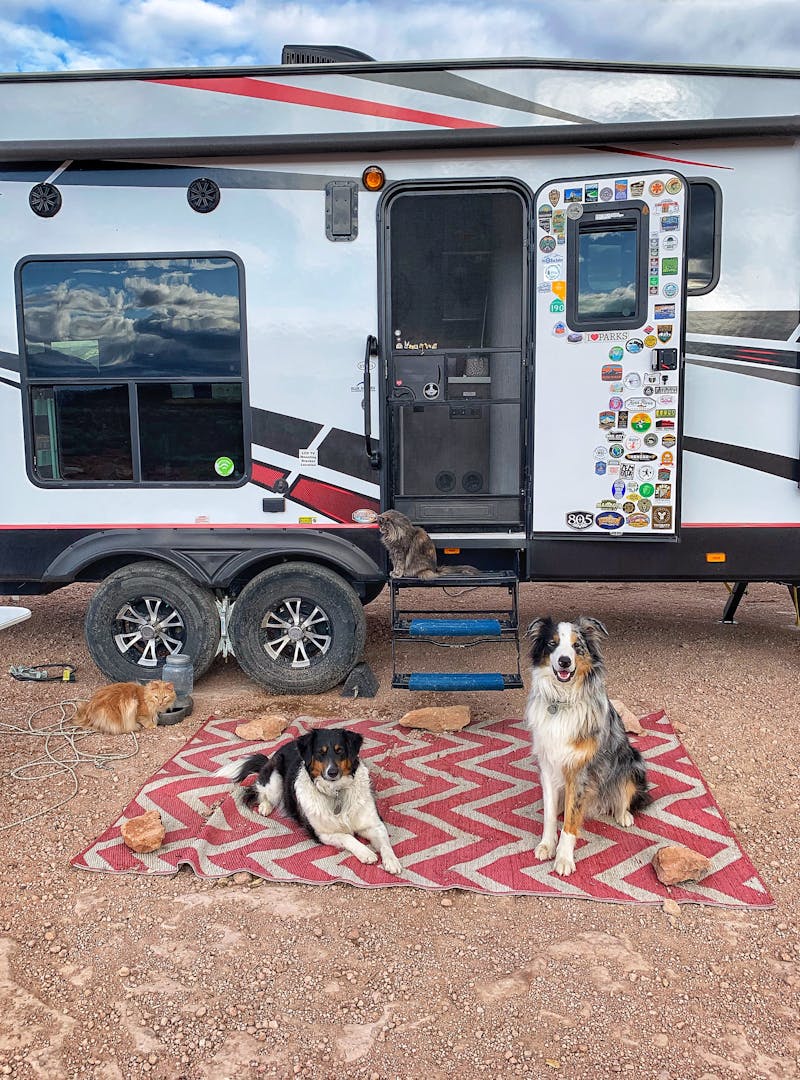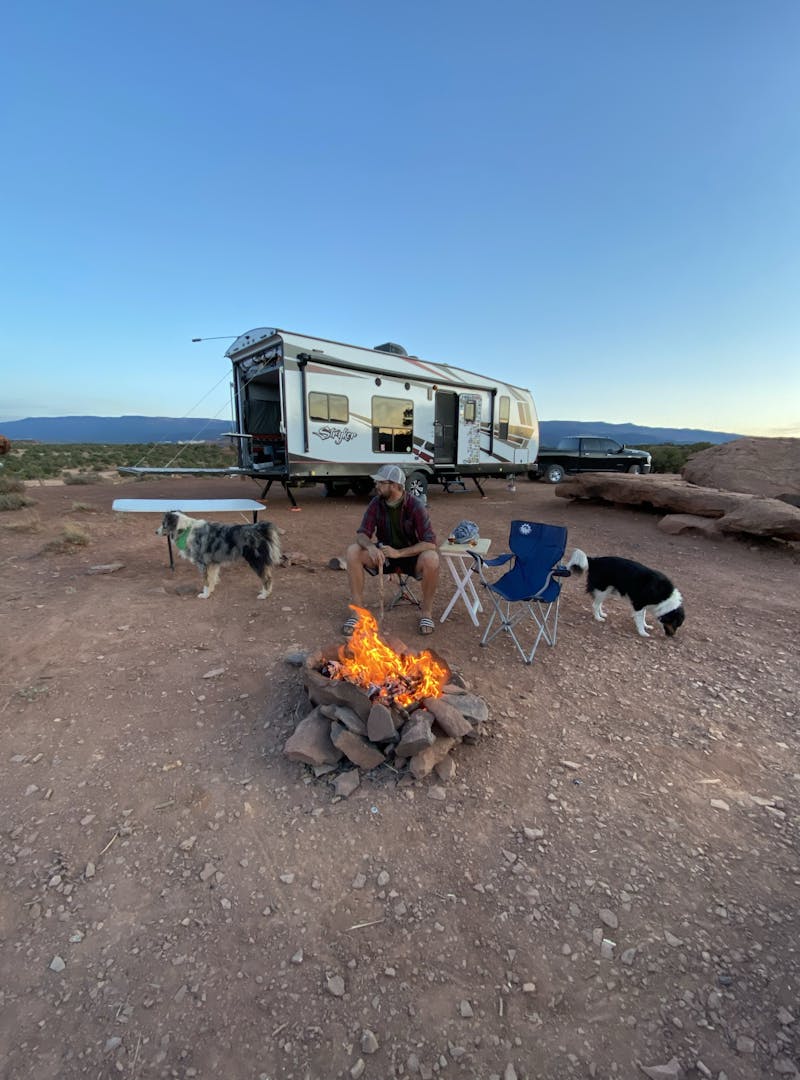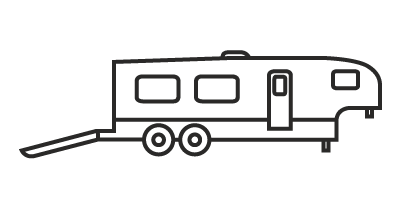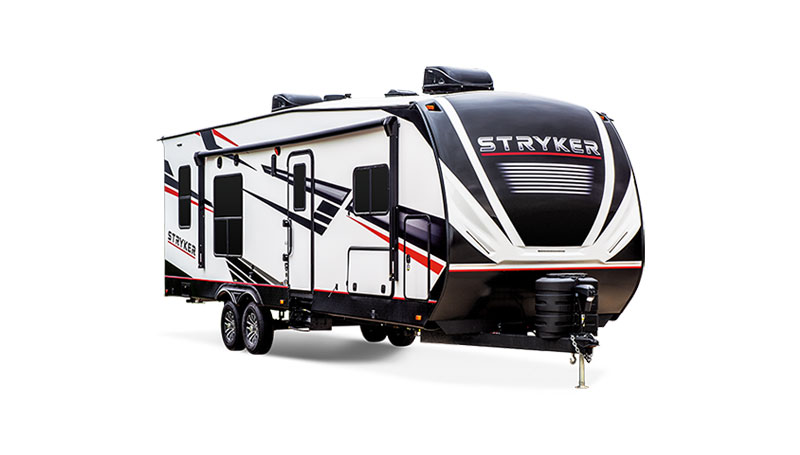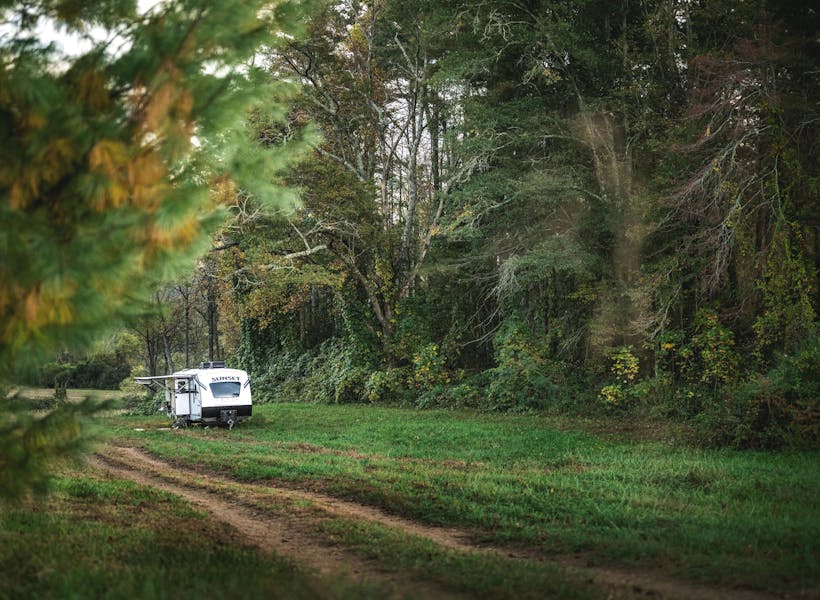My husband Matt and I were feeling stagnant. We were seemingly “just going through the motions” at home, in our jobs and in the daily grind of life. But one night in January 2017, we had just finished watching a documentary film on minimalism when we realized we could live that life, too. We started talking about downsizing, our jobs and what could be possible for us, and soon after, the idea of living in an RV and traveling across the United States was born.
Matt and I both enjoy tent camping, but neither of us had ever stepped foot inside an RV before. Regardless, we were determined that this was the right path for us. So after 18 months of extremely focused planning and saving, we made the switch to long-term RV travel.
Our travels have taken us from coast to coast, with lots of zigzagging in between. We have hiked in countless national parks, kayaked in Canada, and visited family in remote corners of the country. Thanks to RVing, we have lived among the mountains, rivers, canyons, beaches, forests, and deserts. And through all of this, Matt and I discovered that we love boondocking and will take any opportunity we can to camp this way. Boondocking is a term used to describe RV camping in more remote places where there are very limited or zero amenities (i.e. no connection to water, power or sewer). The solitude provides a stress-free environment, the open landscapes provide plenty of space for our dogs to play, and the privacy allows us to sit on our back patio and enjoy the warm breeze. And that stagnant feeling from before? Totally gone.
